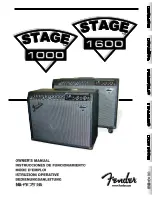
- FCC COMPLIANCE -
This device complies with part 15 of the FCC Rules. Operation is subject
to the following two conditions: (1) This device may not cause harmful
interference, and (2) this device must accept any interference received,
including interference that may cause undesired operation. If the device
is not installed and used in accordance with the instructions, it may
cause harmful interference to radio communications and void the user's
authority to guarantee the equipment.
Note:
This equipment has been tested and found to comply with the
limits for a Class B digital device, pursuant to part 15 of the FCC Rules.
These limits are designed to provide reasonable protection against
harmful interference in a residential installation. This equipment
generates, uses and can radiate radio frequency energy and, if not
installed and used in accordance with the instructions, may cause
harmful interference to radio communications. However, there is no
guarantee that interference will not occur in a particular installation. If
this equipment does cause harmful interference to radio or television
reception, which can be determined by turning the equipment off and
on, the user is encouraged to try to correct the interference by one or
more of the following measures:
•
Reorient or relocate the receiving antenna.
•
Increase the separation between the equipment and receiver.
•
Connect the equipment into an outlet on a circuit different from
that to which the receiver is connected.
•
Consult the dealer or an experienced radio/TV technician for help
.
Modifications not expressly approved by the manufacturer could void the
user's authority to operate the equipment under FCC rules.
The CE logo indicates that this product has been tested and shown to conform
with all applicable European Conformity directives.
DIST MODE:
In DIST mode the EQ comes after the distortion signal, having a strong
effect on the sound of the distorted signal. The clean signal is not
affected by the EQ at all.
INPUT MODE:
In INPUT mode the EQ comes first in the signal path, affecting both the
clean signal and the signal fed into the distortion. Boosting frequencies
in this mode can help drive the distortion signal to a more saturated
tone.
DRY MODE:
In DRY mode the EQ affects the clean signal, but doesn’t affect the
distorted signal at all.






















